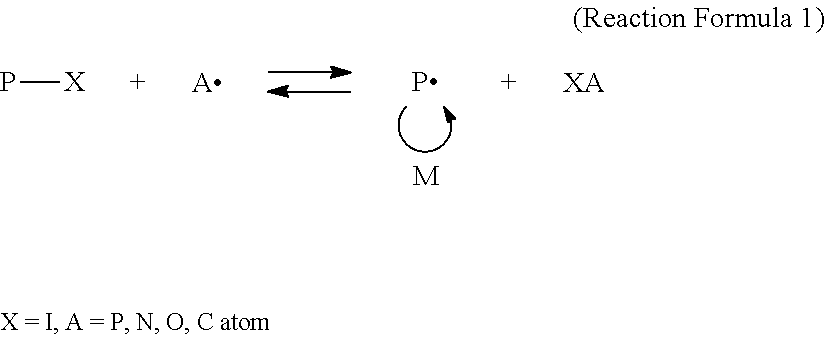Puroduction method for readily dispersible cellulose composition, readily dispersible cellulose composition, cellulose dispersion resin composition, and prodaction method for water-based dispersant for cellulose
a technology of cellulose and dispersible cellulose, which is applied in the direction of transportation and packaging, mixing, chemistry apparatus and processes, etc., can solve the problems of inferior compatibility of cellulose with general purpose resins that are hydrophobic and nonpolar, and achieve the effect of easy production, simple process and small amount of organic solvents to be used
- Summary
- Abstract
- Description
- Claims
- Application Information
AI Technical Summary
Benefits of technology
Problems solved by technology
Method used
Image
Examples
examples
[0092]Hereinafter, the present invention will be described in more detail giving Examples and Comparative Examples, however the present invention is not limited to Examples. Hereinafter, “parts” and “%” are on a mass-basis unless otherwise noticed.
[Production Example 1] (Synthesis of Polymer Dispersant-1)
[0093]Into a reaction apparatus equipped with a stirrer, a reflux condenser, a thermometer, and a nitrogen introducing pipe, 106 parts of dimethyl diglycol (hereinafter, abbreviated as DMDG), 70 parts of dicyclopentenyloxyethyl methacrylate (hereinafter, abbreviated as DCPOEMA), 1.0 part of iodine, 0.2 parts of diphenylmethane (hereinafter, abbreviated as DPM), and, as a polymerization initiator, 5.0 parts of 2,2′ -azobis (4-methoxy-2,4-dimethylvaleronitrile) (trade name: V-70, manufactured by Wako Pure Chemical Industries, Ltd.) were added. The resultant mixture was then stirred and heated to 40° C. with a mantle heater while a nitrogen gas was introduced in the mixture. Polymeriza...
production example 5
[Production Example 5] (Preparation of Cellulose Nanofiber (CNF))
[0100]First of all, 19400 parts of water were added to 600 parts of softwood bleached kraft pulp (NBKP) (refiner treated, solid content: 25%) to prepare an aqueous suspension liquid (slurry) having a pulp slurry concentration of 0.75% by mass. Subsequently, the obtained slurry was subjected to mechanical defibration treatment using a bead mill. After the defibration treatment was completed, the slurry was dehydrated with a filter press to obtain 570 parts of CNF-1 (solid content: 25%) in a water-containing state.
example 1
[Example 1] (Preparation of Aqueous Dispersion Treatment Agent Solution-a Containing 10% by Mass of Polymer Dispersant-1)
[0101]In 25 parts of DMDG, 10 parts of polymer dispersant-1 prepared previously were dissolved, 0.2 parts of oleylamine acetate as a surface active agent were then added thereto, and 64.8 parts of water were subsequently dropped thereto while the resultant mixture was uniformly stirred to obtain 100 parts of aqueous treatment agent solution-a containing 10% by mass of polymer dispersant-1. In solution-a thus obtained, polymer dispersant-1 was dispersed in a light-yellowish clouded state, and even when the solution was left to stand for 24 hours, sedimentation was not observed.
PUM
| Property | Measurement | Unit |
|---|---|---|
| Percent by mass | aaaaa | aaaaa |
| Percent by mass | aaaaa | aaaaa |
| Percent by mass | aaaaa | aaaaa |
Abstract
Description
Claims
Application Information
 Login to View More
Login to View More - R&D
- Intellectual Property
- Life Sciences
- Materials
- Tech Scout
- Unparalleled Data Quality
- Higher Quality Content
- 60% Fewer Hallucinations
Browse by: Latest US Patents, China's latest patents, Technical Efficacy Thesaurus, Application Domain, Technology Topic, Popular Technical Reports.
© 2025 PatSnap. All rights reserved.Legal|Privacy policy|Modern Slavery Act Transparency Statement|Sitemap|About US| Contact US: help@patsnap.com

